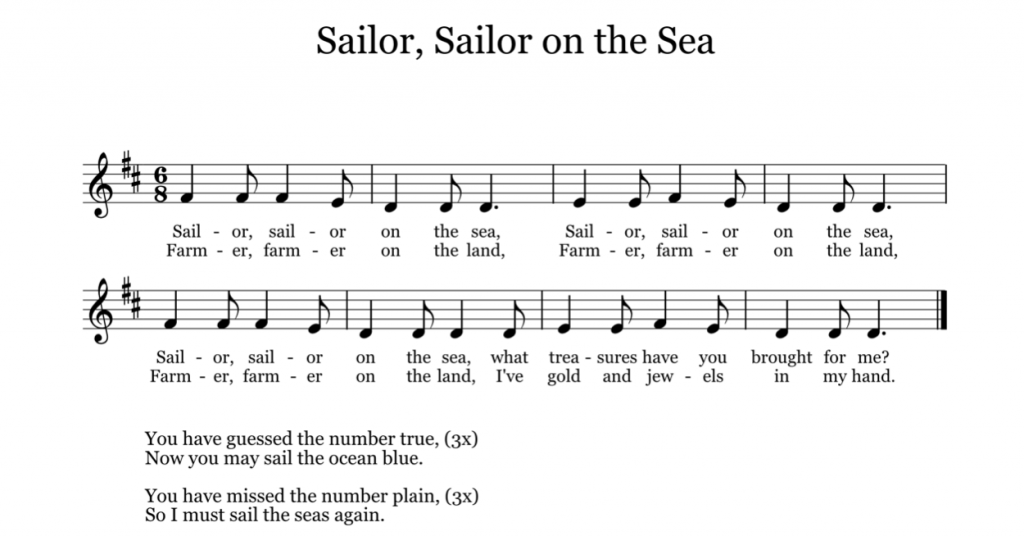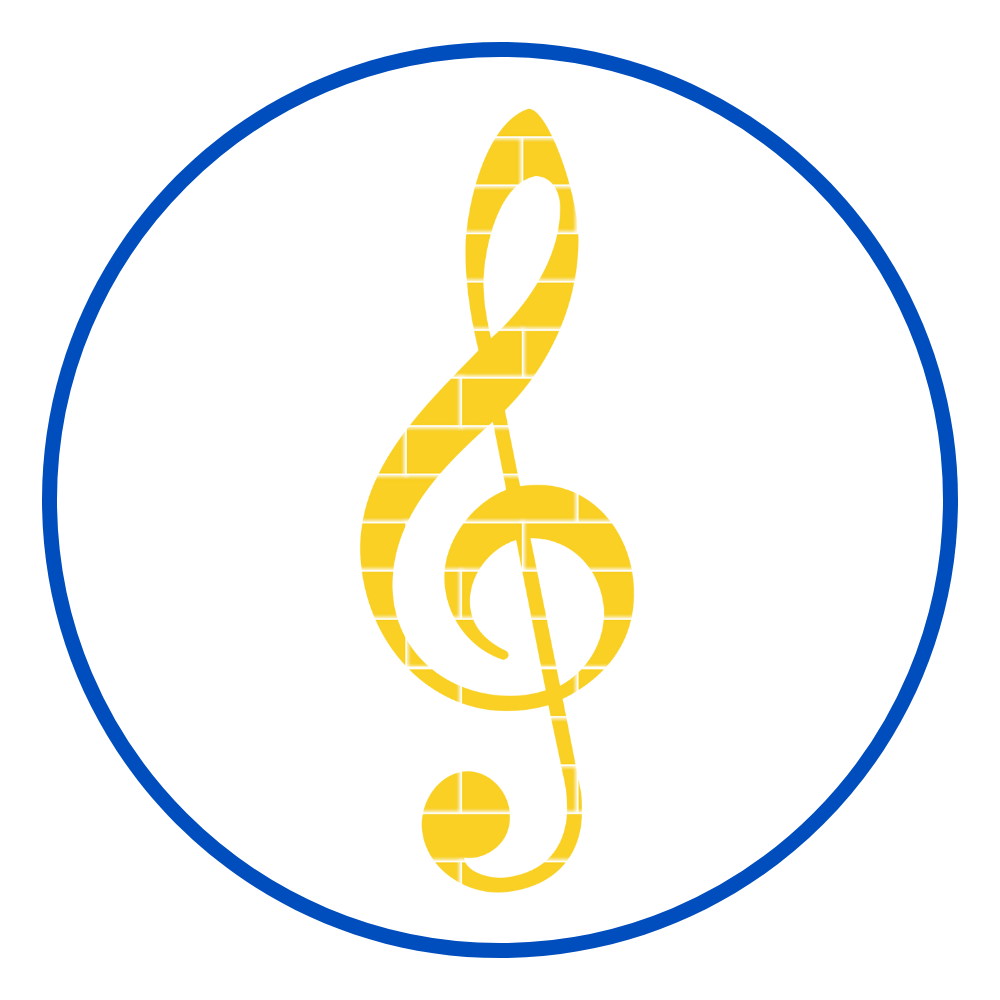Sailor, Sailor on the Sea is a great song for practicing do, re, and mi or to practice steady beat with 6/8 meter. The circle game would work well with your younger students and would be a fantastic opportunity to assess pitch-matching or beat-keeping skills. This would also be a good addition to an ocean-themed informance.
CIRCLE GAME
There are several different ways you could play this game, and it all depends on your focus for the lesson. I’ll present two different versions below.
Version One: pitch assessment/solo singing
Students sit in a circle, with one student (the sailor) standing on the outside. As students sing the song, the sailor walks around the circle. At the end of the first verse, the sailor stops behind a student (the farmer), and holds up 1-5 fingers. You could change the number range to make it more or less difficult. The sailor then sings the second verse (as a solo), and the farmer has to guess how many fingers they’re holding up. If the farmer guesses correctly, the sailor sings (solo) “You have guessed the number true…” If the farmer guesses incorrectly, then the sailor sings “You have missed the number plain…” If the farmer was correct, then that person becomes the next sailor, and the game continues.
The benefit to using this version, is that you can assess two students with each round, making it fairly quick and easy.
Version Two: steady beat assessment
Students sit in a circle, with one student (the sailor) standing on the outside. As students sing the song, they sway back and forth to the steady beat. The sailor walks around the circle to the steady beat. At the end of the first verse, the sailor stops behind a student (the farmer), and holds up 1-5 fingers. You could change the number range to make it more or less difficult. The students then sing the second verse, and the farmer has to guess how many fingers they’re holding up. If the farmer guesses correctly, the students all sing “You have guessed the number true…” If the farmer guesses incorrectly, the students all sing “You have missed the number plain…” If the farmer was correct, then that person becomes the next sailor, and the game continues.
In this version, you’re able to assess students’ beat-matching skills in both how they sway to the beat and how the sailor steps to the beat. For most students, swaying to the beat will be much easier than stepping to the beat. The benefit to this, is you have variety built in to your assessment strategy.
ASSESSMENT
Trust me, I know how overwhelming it feels to assess 500 or more students. I have reiterate that I think most music teachers are given an impossible goal with too few resources in which to accomplish it. In fact, I wrote a letter to my first year teacher self discussing this topic, which you can read HERE. That being said, I think it’s important to remember that assessment looks different in the music room than it does in other subjects. Activities such as circle games, singing, clapping, and centers can all be used for assessment purposes. In addition, clear and concise rubrics are your best friend, along with amazing apps like idoceo.
If you haven’t already, be sure to sign up for my newsletter. I’ll be sharing free resources to connect with this lesson, along with several other lesson ideas.

